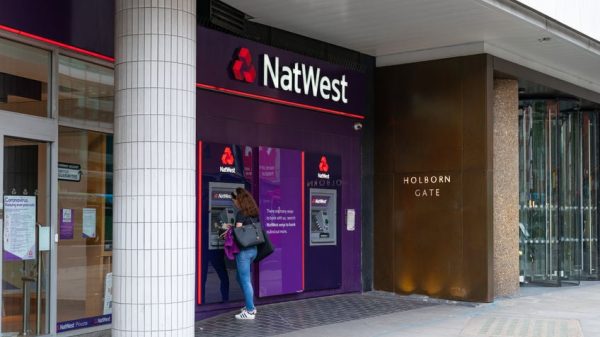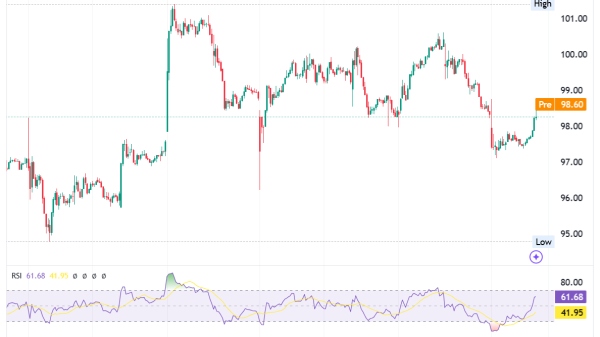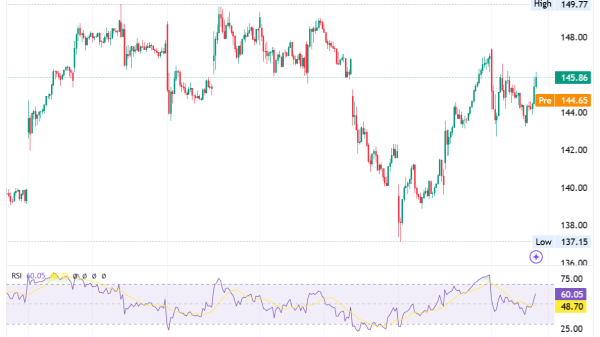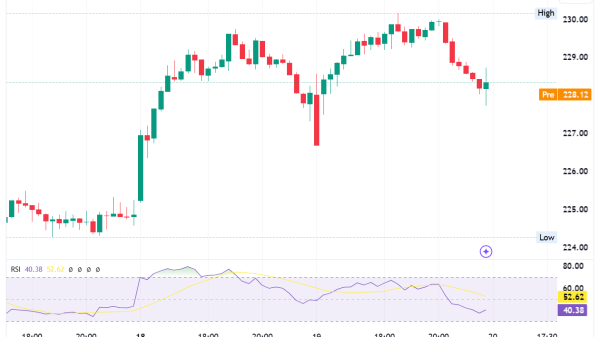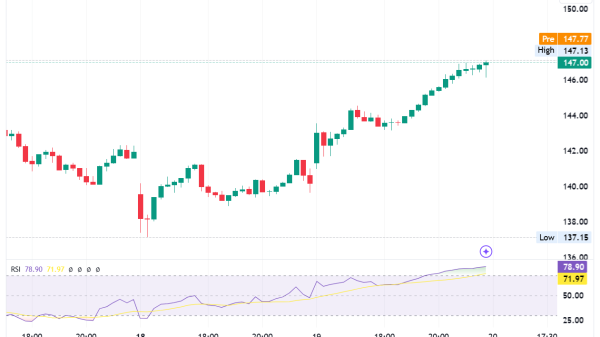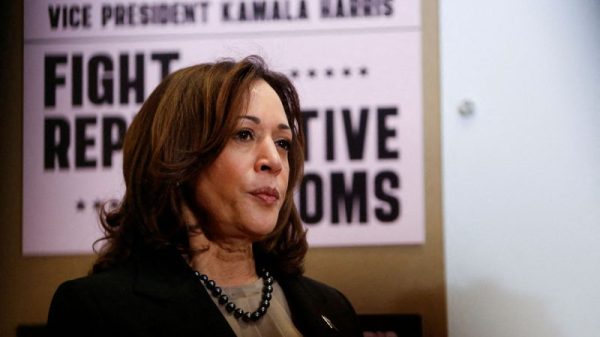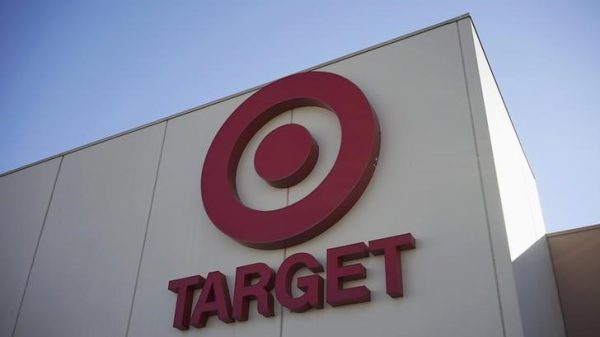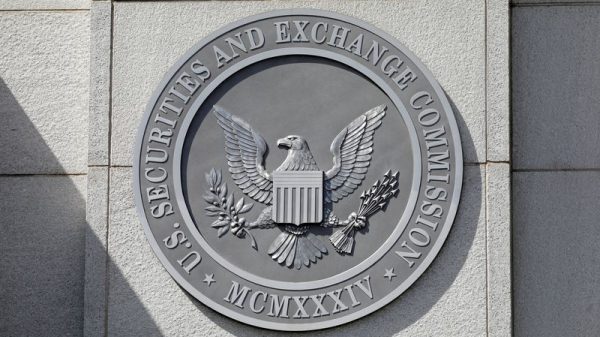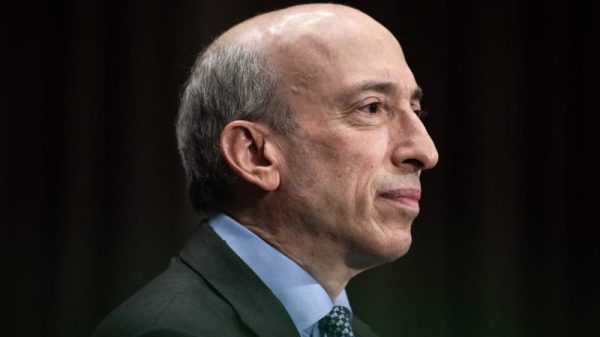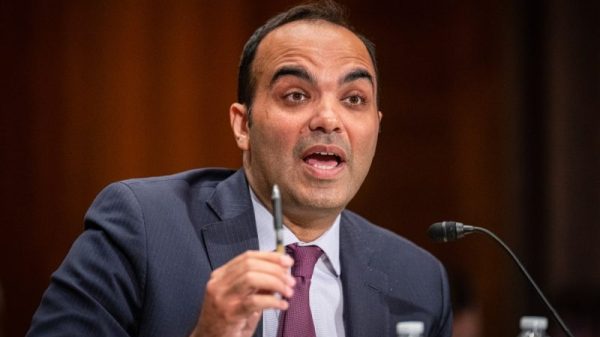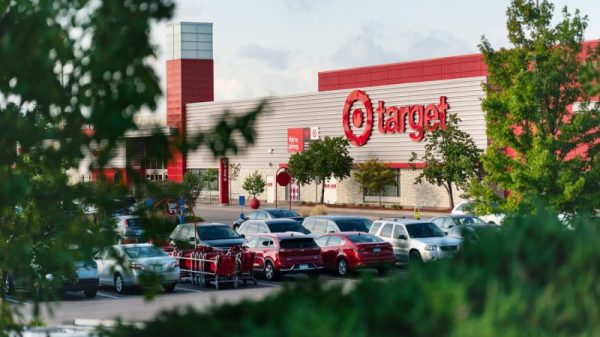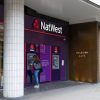
First BanCorp, the parent company of FirstBank Puerto Rico, presented its financial results for the third quarter of 2024, revealing a net income of $73.7 million, or $0.45 per share. Despite challenges including unexpected commercial prepayments and rising expenses, the bank maintained stable core deposits and improved asset quality. The loan portfolio saw moderate growth, and the bank’s digital initiatives and capital return policy signal a commitment to future growth and shareholder returns.
Key Takeaways
- Net income stood at $73.7 million, or $0.45 per share, with a return on assets of 1.55%.
- Adjusted pretax pre-provision earnings slightly decreased to $112 million due to rising expenses.
- Loan portfolio grew by $63 million, despite $102 million in unexpected commercial prepayments.
- Core deposits remained stable at $12.7 billion.
- Nonperforming assets improved, dropping to 63 basis points of total assets.
- Tangible book value per share increased by 15% to $10.09.
- Net interest income for the quarter was $202.1 million with a flat net interest margin expected in Q4.
- Allowance for credit losses decreased to $247 million, and net charge-offs increased to $24 million.
- Capital ratios improved, with the Tangible Common Equity (TCE) ratio reaching 8.79%.
- The company plans to maintain a policy of returning 100% of earnings through dividends and potential buybacks.
Company Outlook
- Anticipated loan growth of 4% for the year, with balance sheet growth expected in late 2025.
- Deposit growth has been flat with a slight decrease this quarter.
- Consumer credit trends are stabilizing with slight improvements expected through 2025.
- Securities portfolio expected to generate $1 billion to $1.1 billion in cash flows for 2025.
Bearish Highlights
- Loan growth projections lowered to 4% from the previous 5% guidance.
- Deposit portfolios are not expected to see significant growth.
- Efficiency ratio may temporarily rise above the targeted 52% due to estimated expenses between $123 million and $124 million from Q4 2024 to Q4 2025.
Bullish Highlights
- Employment rate in Puerto Rico reached a historic low of 5.5%, creating a positive economic backdrop.
- Launch of the nCino platform to enhance commercial lending workflow.
- The company redeemed $50 million in debentures and paid $26.3 million in dividends.
- Capital ratios remain significantly above well-capitalized levels.
Misses
- Unexpected commercial prepayments impacted loan growth.
- Lag in deposit repricing, particularly for public sector deposits.
Q&A Highlights
- Executives discussed the impact of nearly 4% prepayment rate on loan growth projections.
- Management is focused on maintaining optionality in capital return, planning to continue paying out approximately 100% of earnings through 2025.
- Seasonal deposit outflows in the Virgin Islands are consistent with past trends.
- Mortgage banking portfolio shows stability and growth, with potential for increased noninterest income if rates decline.
First BanCorp (NYSE: FBP) remains focused on strengthening its financial position while navigating economic challenges. The company’s strategic initiatives, such as the deployment of the nCino platform and a consistent capital return policy, demonstrate a commitment to leveraging technology for efficiency and maximizing shareholder value. With upcoming conference appearances on November 7th and November 14th, investors will be looking for further insights into the company’s future plans and market strategies.
InvestingPro Insights
First BanCorp’s (NYSE: FBP) recent financial results align with several key metrics and insights from InvestingPro. The company’s commitment to shareholder returns is evident in its dividend policy, with InvestingPro data showing a dividend yield of 3.14% and a 14.29% dividend growth over the last twelve months. This is further supported by an InvestingPro Tip highlighting that First BanCorp has raised its dividend for 6 consecutive years, underscoring the company’s dedication to returning value to shareholders.
The bank’s financial health is reflected in its P/E ratio of 10.46, which InvestingPro suggests is low relative to near-term earnings growth. This valuation metric, coupled with the company’s profitability over the last twelve months, indicates that First BanCorp may be undervalued by the market despite its strong performance.
InvestingPro data also reveals a robust operating income margin of 45.72% for the last twelve months, which aligns with the company’s reported stable core deposits and improved asset quality. This efficiency is particularly noteworthy given the challenges mentioned in the article, such as unexpected commercial prepayments and rising expenses.
For investors seeking a deeper understanding of First BanCorp’s financial position and future prospects, InvestingPro offers additional insights. The platform provides 9 more tips for FBP, which could offer valuable context for the company’s performance and potential investment opportunities.
Full transcript – First Bancorp (NASDAQ:FBNC) (FBP) Q3 2024:
Operator: Good morning all. And thank you all for attending the First BanCorp Q3 2024 Financial Results Conference Call. My name is Brica and I will be your moderator for today [Operator Instructions]. I would now like to pass the conference over to your host, Ramon Rodriguez, Investor Relations Officer at First BanCorp. Thank you. You may proceed, Ramon.
Ramon Rodriguez: Thank you, Brica. Good morning, everyone. And thank you for joining First BanCorp’s conference call and webcast to discuss the company’s financial results for the third quarter of 2024. Joining me today from First BanCorp are Aurelio Aleman, President and Chief Executive Officer; and Orlando Berges, Executive Vice President and Chief Financial Officer. Before we begin today’s call, it is my responsibility to inform you that this call may involve certain forward-looking statements, such as projections of revenue, earnings and capital structure as well as statements on the plans and objectives of the company’s business. The company’s actual results could differ materially from the forward-looking statements made due to the important factors described in the company’s latest SEC filings. The company assumes no obligation to update any forward-looking statements made during the call. If anyone does not already have a copy of the webcast presentation or press release, you can access them at our Web site at fbpinvestor.com. At this time, I’d like to turn the call over to our CEO, Aurelio Aleman.
Aurelio Aleman: Thank you, Ramon. And good morning, everyone and thank you for joining our call today. This morning, we reported another strong quarter for our franchise earning $73.7 million in net income or $0.45 per share, which resulted in a solid return on assets of 1.55%. Adjusted pretax pre-provision was slightly down to $112 million, mostly due to an increase in expenses as we have discussed before. Still, the organization continues to operate in the 52% efficiency ratio range in line with our guidance. Credit demand continues to be healthy in our environment, resulting in actually our strongest quarter of commercial loan originations for the year. Our loan portfolio grew by $63 million despite higher levels of unexpected commercial prepayments that amounted to approximately $102 million in the third quarter. Even though we continue to see a very strong pipeline and we continue to work towards our 5% loan growth guidance but we now expect our loan portfolio to grow closer to 4% in 2024 and that’s really primarily driven by the higher than forecasted prepayments that I just made reference to. In terms of deposit, market dynamics seems to be behaving as expected at the start of this easing cycle. Core deposits other than broker and government deposits remained at $12.7 billion. We did prepay some broker CDs, most of the decline coming from noninterest bearing deposits. We’re proactively monitoring deposit flows and potential deposit pricing opportunities as we capitalize on the expected rate environment, which started and will continue in 2025 with our target of achieving NII improvement over the period. Asset quality also improved during the quarter with nonperforming assets coming down to just 63 basis points of total assets. We think the coming rate environment should be favorable to commercial customers and bodes well for additional asset quality improvement. Finally, our liquidity and capital position remains quite strong. This quarter, we were able to sustain our commitment to deliver 100% of earnings in the form of some capital actions by redeeming $50 million of our outstanding debentures and paid $26.3 million in common dividends. Even accounting for these actions, our capital ratios improved during the quarter and our tangible book value per share grew by 15%, benefiting from the rate backdrop and the short duration of our bond book. We enjoy nice degree of capital flexibility and expect to deploy it in a market that best suits the long term interest of the franchise. Let’s turn to Page 5 to talk a little bit about the environment. We continue to experience what we consider a stable and positive economic backdrop, it’s reflected in a good quarter of originations and also in the trends of asset quality. September employment in Puerto Rico just came out at 5.5%. Actually historical lowest in 1976, also reflecting year-over-year payroll employment improvement of 1.6%. Our team remains focused on expanding executive relationship, building commercial loan pipeline and our new platform technology. We did launch in September our nCino platform, which actually provides a completely digital experience in the commercial lending workflow. We continue to generate a lot of organic capital and we continue to — our priority is to fund loan growth and continued franchise investment in technology to better serve our customers while deploying an excess capital into ongoing accretive balance sheet managing opportunities. We are proud of our third quarter results. We thank all our employees and we look forward to updating you in January on what to expect in 2025. I will now turn the call over to Orlando and we’ll be back to answer some questions. Thank you.
Orlando Berges: Good morning, everyone. As Aurelio mentioned, we reported $74 million in net income for the quarter, $0.45 a share, which compares to $76 million or $0.46 a share last quarter. The provision for the quarter increased $3.6 million to provide for increases required in the allowance for credit losses on the consumer loan portfolios based on charge-off trends and the size of the portfolio. We also had some reduction, slight reductions on the effective tax rate, the relationship of predicted taxable versus income change a bit from what we had before. Net interest income for the quarter was $202.1 million, which increased $2.5 million as compared to last quarter. This quarter, we did have an additional day, which is approximately $1.2 million improvement in net interest income. And we also had increases of $3.8 million in interest income on loans. But on the other hand, the investment portfolio, income was down $1 million as we continue to see repayments and maturities coming in. Loan yields were down 1 basis points. We did have a small impact on the 50 basis point reduction in September. Obviously, the lower yields that are going to affect the deals on the floating rate component of the portfolio. Overall cost of funds, however, stayed flat in the quarter. Net interest margin expanded 3 basis points to 4.25%, mostly reflecting the change in the asset mix from the deployment of the cash flows from the lower yielding investment securities to fund higher yielding loans and bringing down the wholesale funding cost. Regarding net interest margin going forward, what we expect to see the margin to be flat, similar to this quarter in the fourth quarter of ’24 with improvements going into ’25. Our expectation is that rates will come down an additional 50 basis points this year and probably 125 basis points in 2025. But the impact on the downward repricing of the commercial floating rate portfolio, it’s going to be compensated by the repricing of the cash flows from the lower yielding investment portfolio and the repricing of deposits, which typically have a lag in the repricing component. Also, we have been repurchasing subordinated debentures, which have higher cost. And we have led some broker CD maturities, not [indiscernible] them. Those are higher cost funding as well as any new renewals would be done at a lower cost. So that will improve the margin. In terms of the securities, to put in perspective, our estimates are that we’ll see another $480 million of repayments and maturities in the portfolio in the fourth quarter of ’24 and approximately $350 million in the first quarter of ’25. And the repricing of these cash flows either through loans or securities will be seen in the first half of 2025. Other income was fairly flat in the quarter. We had deep collect an older insurance claim for $100,000 and enter into other income. But otherwise, we’re fairly stable. Expenses were $122.9 million, which is $4.3 million higher than last quarter. OREO gains this quarter were $1.3 million as compared to $3.6 million last quarter. We had — last quarter, we sold a large commercial OREO that have been on the books for a while and we realized $2.3 million gain on that sale, which was not realized — nothing similar this quarter. If we exclude OREO, expenses for the quarter were $124.3 million, which compares to $122.3 million last quarter. This increase includes about $1.6 million in higher personnel costs related to merit increases as well as an additional day — payroll day in the quarter. We also saw increases in consulting costs related to some of the technology projects like the nCino project Aurelio just mentioned. We had higher electricity costs and higher rental expenses because we’re charging to expense over the last four months of the year, the remaining rental agreement of one branch that will be closed at the end of December. As Aurelio mentioned, our efficiency ratio continues to be around the 52%. Based on the current stage of several technology — several ongoing technology projects, we estimate that our expense base for the next couple of quarters would be in the $123 million to $124 million range, slightly higher than before but we will provide more guidance for 2025 as the year ends and we report our full year results. In terms of asset quality, we had a reduction in nonperforming of $7.8 million, which is 63 basis points of nonperforming — represent now 63 basis points of total assets. The reduction was mostly on the sale of an $8.2 million on accrual commercial loan that we had in Puerto Rico. Inflows to nonperforming were down $5.3 million. Commercial loan inflows were $17 million lower but consumer loans increased $10.5 million. You might remember that second quarter inflows included a $16.5 million commercial relationship in Puerto Rico that was migrated to nonperforming. On the other hand, loans in early delinquency registered a decrease of $4 million. The decrease in the consumer loan portfolio was almost $8 million, $7.9 million exactly, while the commercial portfolio has increased $4 million. However, this commercial increase was really a case that matured at the end of the quarter and was in the process of renewal, but it’s up to day in payments, so it will come out from early delinquency now in October. In terms of the allowance for credit losses, it’s down $7.5 million to $247 million with most of the reduction coming from the residential and commercial allowances that declined $12.9 million due to improvements in the macroeconomic forecast and also improved financial conditions of several of the commercial borrowers that we have. On the other hand, the allowance on the — of the consumer portfolio did increase by $5.4 million due to the recent loss trends. The ACL ratio, overall ACL ratio is down to 1.98 from 2.06 on the quarter as we continue to see good credit trends in the commercial and the residential mortgage portfolios. Net charge-off for the quarter were $24 million or 78 basis points of average loans, which compares to 69 basis points last quarter. Included in the charge-off is $1.2 million on the sale of the commercial nonaccrual loan I just mentioned that represents approximately 4 basis points of the increase. Consumer net charge-off increased $1 million in the quarter as compared to the third quarter. On the capital front, regulatory ratios increased as we continue to — and continue to be significantly above well capitalized. We did deploy, as Aurelio mentioned, 100% earnings into the junior subordinated debenture and repurchase we did in the quarter as well as the payment of the common dividends, but capital did increase based on the excess of earnings over the dividends. The tangible book value per share increased by 15% to $10.09 and the TCE ratio reached 8.79%, mostly a combination of the $160 million increase in the fair value of the securities as well as the earnings for the quarter. Still, we have remaining AOCL on the books, which represent around $2.92 of tangible book value and over 230 basis points of the TCE ratio. We will continue with our capital deployment in a way that it’s, as Aurelio mentioned, with best interest of franchises and our shareholders and in accordance with our capital plans. This concludes our prepared remarks. Operator, would you please open the call for questions. Thanks.
Operator: [Operator Instructions] We have the first question on the line from Timur Braziler with Wells Fargo.
Timur Braziler: My first question is around the balance sheet. Just wondering what your thoughts are around when the balance sheet can actually start increasing here? And then as it relates to NII, in the release, it sounded a little hold pull for NII growth in ’25 being driven by bond, cash flow, reinvestment. I’m just wondering what the correlation is between the ability to grow the balance sheet and grow NII in ’25 is?
Orlando Berges: There are two things there. The cash flows will continue to come from the investment portfolio and will continue to reprice. As of now, most of that cash flow has been reinvested in loans and — either that or stay in cash, that’s why necessarily — the balance sheet is not necessarily growing. We will continue to put monies into loans. And as Aurelio mentioned, we’re expecting like a 4% growth this year. And that will continue to be a stable balance sheet until we feel that the investment portfolio size is at the level that it’s on average what we would like to maintain for liquidity needs and for collateral [indiscernible] funds. At that point, we will start reinvesting some of the money and there will be some growth on the balance sheet. As I mentioned, Timur, some of the broker cities that we had on the books that mature we are letting them go, they’re high cost of funds. And at this point, we still have good liquidity coming in from the investment portfolio. So not necessarily, we need to increase the balance sheet to maximize earnings but clearly, that’s something that we should start seeing in latter part of 2025.
Timur Braziler: So that latter part of 2025, is that kind of corollary to when you’re expecting that deposit growth as well or could we see some incremental deposit growth here in the near term?
Orlando Berges: Yes, deposit growth have been sort of flat. It’s a little bit up or a little bit down. When I talk about deposit flow, I typically exclude — deposit growth, I typically exclude, for this discussion, brokers and government. Brokers, we totally decide when we want a little bit more or a little bit less. Some of it is being used to fund the Florida — our Florida operations. So we manage that. And government, it’s sort of a stable kind of base of what we have. So it comes up or down a little bit. So looking at the other deposits you saw they were just slightly down this quarter or $36 million, $37 million. We had a little bit of a shift between interest and noninterest bearing. And we feel that the market, in general, will stay sort of that and maybe grow a little bit but we don’t expect to see significant growth on the deposit portfolios. But only the reinvestment of the interest component increases the portfolios typically in the market. But obviously, the market is coming from a humongous amount of liquidity from all the funds that were allocated and most of that is gone by now. So what’s coming in is some of the other programs that we have discussed in terms of still remaining FEMA and some of the pandemic kind of infrastructure funds that are coming into the market and construction related funds that are coming into the market.
Timur Braziler: And then just last for me, it looks like although the Puerto Rican banks this quarter had a uptick in some consumer credit. I’m just wondering the broader health of the consumer there. Have we kind of troughed out from some of the pandemic benefits? And I guess what are we looking at now for general consumer trends on the island?
Aurelio Aleman: I think we talk about normalization. Early in the year, we talk about 2020 — we actually started talking about this in 2023. The post liquidity increase on the consumer pocket by the pandemic, primarily as that moves out, we were expecting some normalization on the behavior of the consumer portfolio started for the credit card in 2023, continue to 2024. And then what we see now is that we’re reaching a peak and we should, going forward, as we’re seeing today in some of the early delinquency metrics, show some slight improvement. That is coupled with whatever happens with the demand. So we’re not increasing risk appetite. We have been very firm in doing that. We have metrics for each portfolio and goals of tolerance, of delinquency and losses. And I will say we expect stability from that portfolio with some delinquency and loss improvement over 2025.
Operator: Your next question comes from Steve Moss with Raymond James.
Steve Moss: Maybe just starting here on the — or following up on the securities portfolio here. I heard you, Orlando, on the $350 million maturing in the first quarter of 2025. Just wondering kind of what are the expected cash flows beyond the first quarter?
Orlando Berges: The $480 million this quarter and $350 million in the first quarter, it’s — and we are — for 2025, full 2025, including the $350 million, we’re estimating that it’s going to be somewhere between $1 billion and $1.1 billion based on maturities and repayments. That’s full ’25, including the $350 million on the first quarter.
Steve Moss: And the coupon on that, I’m assuming around 2% plus or minus?
Orlando Berges: It’s minus. It’s really about — it’s — the maturing component is probably going to be somewhere between 150 and 160. So it’s — the overall yield, it’s about 190, 180 something, but some of it, it’s also things that not mature until later in ’26 and ’27.
Steve Moss: And then in terms of — just curious here, with the Fed rate cut, kind of want to get a sense as to how you’re thinking about the pace of deposit repricing and kind of what you’re seeing here with the 50 basis point cut?
Orlando Berges: So deposit repricing, obviously, have to be divided in three components. The typical noninterest bearing account, those had a beta coming up of about 13% to 14%. So we’re assuming that’s going to be following that same pattern. In the case of the government side, betas were about 78%. We feel those are going to come down at maybe slightly lower beta than that 78% that we had coming up. But clearly, those are the ones that do have some components that will reprice faster. Then in terms of time deposits, we have already started adjusting some rates on new issuance. But obviously, the repricing will follow whatever terms. Clearly, people were not making — the average time deposit, it was mostly one to one and half years. We didn’t have much in terms of longer things being originated. So it doesn’t take that long to start repricing but we’ve already repriced some of our table rates for those terms going forward. So I mean, again, I always see a lag on the typical deposit portfolios repricing. That’s why I mentioned that we are expecting margin for the fourth quarter to be sort of the same line of the third quarter, because some of the repricing on the lending side, on the floating rate portfolio will be faster that some of that on the deposit. But also on the other hand, obviously, we are eliminating some of those higher cost broker CDs that are not long term that are being either repriced lower or eliminated at a full benefit.
Steve Moss: And in terms of just kind of — commercial originations remain quite strong here. Just kind of curious where are you seeing the most demand there? And it sounds like the pipeline has improved. So probably an uptick is coming in terms of total originations for the fourth quarter.
Aurelio Aleman: On the commercial side, there is a combination of construction deals that continues to move into the book, some of that related to the CDBG projects. There is auto industry deals, transactions that are coming into the book also as new deals that are being happening. There’s also C&I components on the commercial side. We’re very active on the street, looking for new clients. There is some distribution industry, supermarkets, so it’s a combination of not necessarily a concentration in any asset class itself. And there’s some government activity also that we expect during the quarter. And Florida actually continues to be the contributor to that commercial pipeline. The consumer, we will say it’s stable more than just the growing market right now.
Operator: We now have Frank Schiraldi with Piper Sandler.
Frank Schiraldi: Wondering if you guys could just remind us on — Orlando, I know you talked about the lag generally on the deposit side, specifically on the public sector deposits as far as, I guess, large portion of that is indexed. What are — is it still reasonable to think a one quarter lag in terms of those public sector deposits coming down in cost?
Orlando Berges: You have, on average, clearly, yes, you have some that will reprice faster but others have longer lags, because they didn’t necessarily reprice up the same way depending on the type of account. So the average of one quarter lag, it’s a good proxy, Frank.
Frank Schiraldi: And then just in terms — another question on loan growth. You mentioned the prepayments in the quarter, and so close to 4% this year. I guess with the stronger — this continued strong pipeline, mid single digits is still a reasonable place to expect future loan growth in coming quarters?
Aurelio Aleman: I would say yes. Obviously, that was our goal this year, which has been hampered by decided than expected prepayments or — but when you look at the origination volumes, they are in line with what we targeted in terms of, well, early to anticipate next year. But based on what we see and what the economic activity is bring in, it’s a good number for next year to mid single digit for now, yes.
Frank Schiraldi: And then just lastly, on — Orlando, you mentioned expense — expectations on the expenses over the next, I think, couple of quarters. So I just want to make sure I heard that correctly that 123 to 124, is that 4Q and beyond, was that just 4Q? And then as we think about you guys, the targeted efficiency ratio of 52%. Is it kind of reasonable to assume maybe that ticks up a little bit in the near term, just given the expense guide and then you get back to that 52% over time. Is that reasonable when thinking about trends into 2025?
Orlando Berges: The 123, 124 it’s — what we estimate based on the stage of some of these projects, I mentioned between fourth quarter of ’24 and fourth quarter of ’25. That obviously excludes any kind of OREO. We’re still seeing some positive numbers coming out of the OREO portfolio that would offset some of it. As you saw this quarter, we had $1.3 million in OREO gains. So that would be on the numbers and that’s part of the 52%. So that’s why we feel that with the pickup through the year on earnings from the repricing dynamics of the investment and loan portfolios. And so with those levels of expenses, 52% sort of holds on a GAAP basis, including the OREO component. If you exclude OREO, it would be clearly a bit higher in the first couple of quarters, definitely.
Operator: We have our final question on the line from Kelly Motta with KBW.
Kelly Motta: I was hoping maybe you could expand a bit more on capital return. I know you did the sub debt repurchase this quarter. Historically, you’ve paid out about 100% of earnings. Wondering thoughts on stepping back in here with the buyback as well as is that paying out earnings given 16% plus CET1, if that’s a reasonable expectation as we look out to next year?
Aurelio Aleman: Well, as I said before, Kelly, we like to keep optionality. So we still have capital plan that has plenty space approved for execution. We decided to focus on the last quarter on paying the [troughs] and this quarter, we’ll see what happens. But definitely, we keep the optionality. I think keep in mind, the 100% goal continues to be for now and through 2025, that is our position today but that obviously could change as we move into 2025.
Kelly Motta: And then can you remind us what happened with the Virgin Islands? I know there was some deposit outflow and that’s where the commercial prepayment was. Just wondering if there’s anything unique going on that drove kind of that variance on both sides of the balance sheet this quarter and how we should be thinking about that?
Orlando Berges: The Virgin island, it’s two things. We did have a repayment on the government side. They use their funds [indiscernible] funds to rebate some lines. So that came down from deposits they had on the bank. But the other thing is that you have to — if you go back, typically, the third quarter, there is a seasonality component in the Virgin Island is there’s a slow season. If you go back to third quarter of last year, we had about a $60 million reduction in the quarter from June to September, which compares with a $50 million or so reduction we had this quarter. The island has — a big component is tourism and it comes down this quarter. And you see the positive movements — and that’s — there was nothing unusual, it was not like one account or one sector. It was sort of across the different business and retail components and again, similar to what we saw in last year.
Kelly Motta: Most of my questions have been asked and answered at this point. I guess on mortgage banking with the move in rates, any expectation that, that revenue line could pick up here as we look ahead?
Aurelio Aleman: Yes, I think the monthly applications reported in the market is really a good proxy. The industry move with rates and we move as well. We have a pretty good market share on the overall origination of the market and some shifting from conforming or nonconforming takes place based on where the rates are. And so I would consider the portfolio has stabilized and achieved some growth this year, driven by more nonconforming paper based on rates and that could change and that would bring more noninterest income into the picture. So if rates go lower in the conforming side, you definitely will see that piece increase or then you see it in the portfolio, the rates go to the other side. So the portfolio is very healthy. We are achieving the best asset quality that we ever had in that portfolio. So we’re very pleased with the performance of the business. And any opportunity that we see to grow it will probably be taken next year.
Kelly Motta: And then last question from me. Your commentary around NII and margin, one factor and it is the repricing of some of these loans down in response to the rate cuts. Can you remind us how much of the book floats?
Orlando Berges: We have 54% of the commercial book. The consumer book is a fixed rate portfolio other than credit card that do have some repricing with prime. But the commercial side, it’s 54%. It’s floating, mostly on the C&I, the CRE is basically fixed. And that 54%, it’s about 33%. It’s SOFR base. We have our 12% prime base and 9%, it’s basically treasury base. So obviously, the prime based loans have impact as we saw in the second half of September. Some of the other SOFR base, we’ve had some movement already as SOFR has come down through the quarter.
Operator: I can confirm that has now concluded today’s question-and-answer session. And I would like to hand it back to Ramon Rodriguez for some final remarks.
Ramon Rodriguez: Thanks to everyone for participating in today’s call. We will be attending Hovde Financial Services Conference in Miami on November 7th and Piper’s Conference in April on November 14th. We look forward to seeing a number of you at these events and we greatly appreciate your continued support. Have a great day.
Operator: Thank you all for joining today’s conference call with First BanCorp. I can confirm today’s call has now concluded. Please enjoy the rest of your day, and you may now disconnect from the call.
This article was generated with the support of AI and reviewed by an editor. For more information see our T&C.



